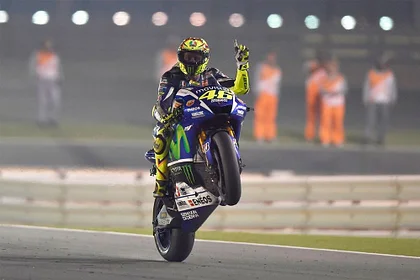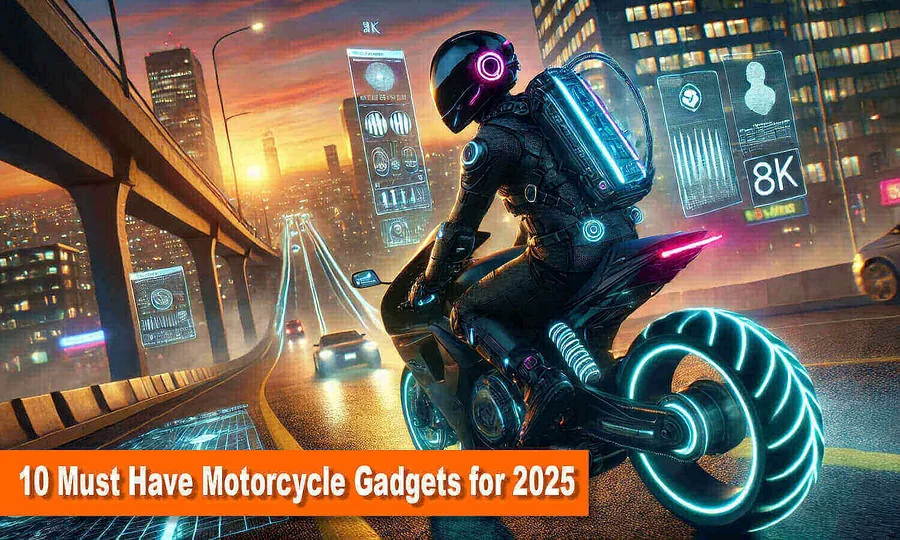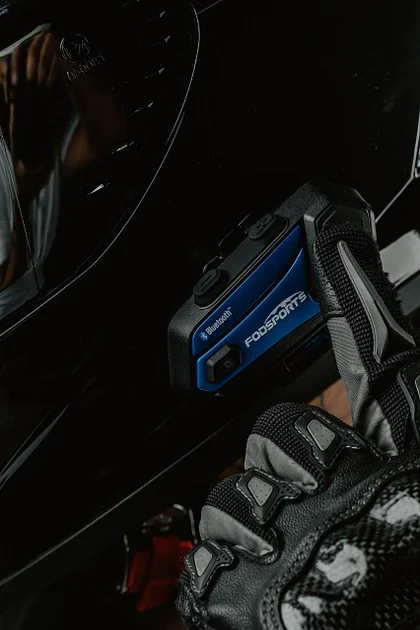What kind of helmets do the wealthy go for? Here’s a look at what Middle Eastern elites are buying
Leave your thoughtsRiding a motorcycle gives one an unparalleled feeling of freedom and adventure. You feel the thrill as you drive through winding roads. There is also the exciting exploration of off-road terrains. However, the pursuit of happiness also comes with risks. Therefore, it is very important to choose protective gear. Among these important items, the motorcycle helmet is the most important one. Motorcycle gear – it is the guardian of your most valuable asset – life.
In this complete guide, we will dive into the complex scope of motorcycle helmet safety standards. We will analyze the certification and testing methods that define the pinnacle of head protection.
Be prepared, we will unravel the complexity of these strict benchmarks. We will help you gain enough knowledge to make an informed decision and pay attention to your health every time you ride.
Table of Contents
Overview of Helmet Safety Certifications
1. Department of Transportation (DOT)
2. Economic Commission for Europe (ECE)
3. Snail Memorial Foundation
4. International Motorcycling Federation (FIM)
5. SHARP (Helmet Rating and Assessment Program)
- Unveiling the Complexity: A Comparative Analysis of Helmet Safety Standards
- Impact Testing: The Key to Helmet Safety
- Puncture Resistance: Protecting Against Puncture Threats
- Retention System Integrity: Ensuring a Secure Fit
- Environmental Durability: Guaranteeing Performance in Adverse Conditions.
- Peripheral Visibility and Ventilation: Improving Comfort and Safety.
- Navigating the Tier: Comparison and Differences in Safety Standards
- Factors Affecting Helmet Safety and Efficiency
- Shell Construction: The Foundation of Shock Absorption
- EPS (Expanded Polystyrene) Liner: The Unsung Hero
- Ventilation and Aerodynamics: Combining Comfort and Performance
- Retention and Fit Systems: The Key to Ensuring Safety
- Visors and Goggles: Improving Visibility and Protection
- Your Best Choice: Choosing the Safest Motorcycle Helmet
- Frequently Asked Questions (FAQs) About Helmet Safety Standards
- Is ECE 22.05 Better Than Dot?
- How do I know if my helmet is ECE certified?
- Which helmet is the safest?
- How often should I replace my motorcycle helmet?
- Can I use an ECE helmet in the US?
Helmet Safety Certification Overview
The pursuit of two-wheeler safety is a global endeavor. There are several organizations working to develop strict standards for motorcycle helmet performance.
Each certification has its own set of rigorous tests. They will evaluate factors such as impact resistance, protection, and efficiency of drilling storage systems
Now, let’s explore the key players and their standards:
1. Department of Transportation (DOT)
This standard is enforced by the US government and all motorcycle helmets sold within the United States must be DOT certified. It is regulated by Federal Motor Vehicle Safety Standard No. 218 (FMVSS 218).
This certification ensures that the helmet meets specific standards for impact attenuation. Puncture resistance, storage system integrity and peripheral visibility
2. Economic Commission for Europe (ECE)
The ECE certification is a widely accepted standard, with more than 50 countries in Europe adopting this motorcycle safety standard.
The latest ECE 22.06 recertification requires helmets to pass comprehensive testing. This includes impact resistance at different angles. Accessory compatibility and environmental durability evaluation
3. Snail Memorial Foundation
The Snell Memorial Foundation is dedicated to improving helmet safety. It is a private non-profit organization established in memory of racer Pete Snell.
The Snell M2020 standard is currently considered one of the most stringent in the industry. It includes rigorous shock absorption testing. Puncture resistance and visor missiles
4. International Motorcycling Federation (FIM)
FIM standards are specifically developed for professional motorcycle racing. This is the highest level of protection for riders competing at the highest level of the sport.
The 2001 FRHPhe-2019 certification is the latest standard. Focusing on mitigating rotational forces and oblique collisions, ensuring maximum safety for racers who challenge their limits
5. SHARP (Helmet Rating and Assessment Program)
These are motorcycle safety standards set by the UK government.
SHARP’s rating system uses a unique approach, sourcing helmets directly from retailers. Therefore, you can be assured that the products tested are consistent with the products available to consumers.
SHARP uses a 5-star rating scale, mainly evaluating factors such as shock absorption. Field of view and ventilation
” alt=”” aria-hidden=”true” />

Uncovering the Complexity: A Comparative Analysis of Helmet Safety Standards
Each certification follows its own set of rigorous testing protocols. But it is crucial to understand the distinctions and differences between these standards. It is important to determine the level of protection that best suits your riding style and preferences.
Impact Testing: The Key to Helmet Safety
Impact testing is at the heart of every helmet safety certification. It is a critical assessment of a helmet’s ability to absorb and disperse the forces generated during a crash. However, the specifics of these tests can vary greatly between standards.
DOT certification uses flat and curved heads to simulate impact situations. While the ECE 22.06 standard takes a more comprehensive approach, it features higher angle impacts and higher drop heights to better simulate real-world crashes.
The Snell Memorial Foundation’s impact testing is well known for its rigorous testing in a variety of impact scenarios. Testing also includes continuous water spray testing to simulate adverse weather conditions.
Similarly, the FIM standard requires helmets to be able to rigorously simulate angled impacts. This is to ensure protection against the rotational forces often seen in racing accidents.
Puncture Resistance: Protecting Against Puncture Threats
Motorcycle helmets must not only withstand blunt impacts, but also protect against penetrating objects such as road debris or cracked windshields. Each certification addresses this through specific penetration tests. While the methods vary
DOT standards use a 6-pound sharp object dropped from a height of more than 10 feet to evaluate the puncture resistance of helmets.
ECE certification takes a more comprehensive approach by testing multiple aspects of the helmet, for example, the chin guard will be tested to ensure comprehensive protection.
The Snell Memorial Foundation’s penetration test is particularly rigorous. It includes an evaluation of facial protection. It uses an air gun to shoot lead bullets into the mask. Simulating a high-speed collision
” alt=”” aria-hidden=”true” />

Retention System Integrity: Ensuring a Secure Fit
Even the most advanced shock-absorbing helmets can fail if they come loose during a crash.
For this reason, helmet safety certification emphasizes evaluating the ability of the fastening system to securely hold the helmet.
DOT standards evaluate containment systems through weight-based testing. This ensures that the straps do not stretch beyond specified limits.
Similarly, ECE certification uses a testing machine that yanks the helmet backward. This is a check on the integrity of the chin strap under dynamic loads.
The Snell Memorial Foundation takes retention system testing to the next level with dynamic retention testing, where the chin strap must be able to withstand the impact of a fall without excessive stretching or damage.
Environmental Durability: Guaranteed performance in adverse conditions.
Motorcycle helmets are subject to a variety of environmental factors. Extremely high temperatures, solvent exposure, and UV rays are all contributing factors. To ensure consistent performance, ECE incorporates tests that simulate these conditions. The helmets are exposed to solvents, UV rays, and varying temperatures, and then their performance is evaluated.
Peripheral Visibility and Ventilation: Improving comfort and safety.
Impact protection is often the primary focus of helmet safety certification. But factors like peripheral vision and ventilation play a vital role in ensuring rider comfort and safety. DOT and ECE standards set specific requirements for unobstructed vision and adequate airflow. On the one hand, these standards ensure that the helmet does not affect the rider’s situational awareness. On the other hand, they also ensure that heat stress does not occur during long rides.
Navigating the hierarchy: comparison and differences in safety standards
There are a variety of certifications to choose from, so which one is the best?
You may wonder which standard is the most authoritative in ensuring rigor and safety.
In fact, each certification has its own advantages and disadvantages. But there is a general consensus among industry experts and experienced riders:
First, let’s take a look at the Snell Memorial Foundation’s M2020 standard, which is widely regarded as the pinnacle of motorcycle helmet safety certification. The rigorous testing protocol covers multiple impact scenarios and puncture resistance evaluation. In addition, the preservation system is rigorously evaluated. This makes it the gold standard for head protection.
However, it is worth noting that the ECE 22.06 and FIM standards are not far behind. They provide comprehensive testing methods for specific riding environments and regimes.
Ultimately, your certification options should suit your riding style, preferences, and safety. A helmet that meets the stringent requirements of multiple certifications is always better. Providing the highest level of protection, you can rest assured on the road.
Factors that affect the safety and efficiency of helmets
This certification is a guiding light in the field of helmet safety. But there are several special factors that affect the performance and lifespan of protective equipment.
Shell construction: the basis of shock absorption
The body of the helmet is made of materials such as carbon fiber, fiberglass or polycarbonate. As the first line of defense against impact, each material has different advantages and disadvantages in terms of strength, weight and price.
Carbon fiber is popular for its tensile strength and ultra-light properties. Therefore, it is the first choice of high-end helmet manufacturers. Carbon fiber helmets are becoming more and more popular nowadays. In high-level motorcycle racing
Fiberglass is not as strong as carbon fiber. But its shock absorption and payment capabilities are excellent. This makes it a common material for mid-level helmets.
Polycarbonate is not as durable as other materials, but the product provides a cost-effective solution for entry-level helmets. Therefore, it can provide enough protection for shorter rides and lower speeds.
EPS (expanded polystyrene) liner: the unsung hero
Under the helmet frame is the real shock absorption hero: the EPS (expanded polystyrene) liner. This lightweight foam material is designed to disperse the energy generated by a collision. Therefore, it protects your head from the destructive force of a collision.
Not all EPS liners are created equal. Available in different densities and multi-density configurations, they can be tailored to specific impact situations. Premium helmets often feature denser, more foldable foam layers. Thus, optimal protection is guaranteed at a wide range of intensities and impact angles.
Ventilation and aerodynamics: a combination of comfort and performance
Comfort and aerodynamic performance are essential to ensure a smooth and enjoyable ride. Ventilation system vents always work in harmony with efficient aerodynamic structural design. This reduces wind noise, prevents heat build-up and also helps reduce fatigue on long rides.
Manufacturers such as AGV are known for their commitment to innovation. They have pioneered advanced ventilation schemes and wind-tunnel-tested aerodynamic profiles. This creates the perfect balance between protection and efficiency.
Fastening and fit systems: the key to ensuring safety
Even the most advanced helmet is useless if it cannot be secured in place during a crash. This is where the storage system plays a key role. (Typically, the attachment system consists of a chin strap and a quick release.)
The FIM requires a strong double D-ring closure system to ensure a safe and secure fit. However, it is equally important to prioritize size and choose the right helmet. Because a comfortable and proper fit is essential for maximum protection and stability.
Visors and visors: Increased visibility and protection
Visors and visors are often overlooked components of motorcycle helmets. However, they are an important barrier against wind, rain, debris and other environmental hazards. Premium helmets with polycarbonate visors This type of helmet is popular for its transparency, scratch resistance and durability
Certification agencies such as the Snell Memorial Foundation take face protection a step further. They will put them through rigorous testing against missiles to ensure they can withstand high-speed impacts.
Your Best Choice: Choosing the Safest Motorcycle Helmet
The above information is a comprehensive look at helmet safety standards and construction materials. Now you can make an informed decision when choosing your next motorcycle helmet.
However, there is more to the choice than just certifications and specific requirements. This is a very personal decision. You should match your riding style, preferences, and commitment to safety.
Consider the following when starting your search:
Riding Discipline Are you a dedicated street rider. Off-road enthusiast or professional racer? Each discipline requires specific helmet specifications and certifications to ensure the best protection.
Consider your budget. Yes, safety should not be compromised. But helmets come in a wide variety of styles, from affordable entry-level to high-end premium models. Set your budget and consider certifications and qualifications accordingly.
” alt=”” aria-hidden=”true” />

Focus on Sport and Comfort Slip-on helmets are not only comfortable to wear, but also effectively protect your head in the event of an impact. Take the time to try on different sizes and styles.
Find the right size
Choose from a reputable brand I sincerely recommend buying a helmet made by a reputable manufacturer. They have a good record of safety and innovation, such as helmet brands such as AGV, Shoei, and Arai. They are known for their commitment to cutting-edge technology and rigorous testing protocols.
Your Personal StyleHelmet safety should always come first. But there is no reason to sacrifice personal style. Many manufacturers offer a wide variety of designs and shades. So you can show your personality while being protected.
Remember, choosing a motorcycle helmet is more than just buying it. It is also an investment in your safety and well-being. Once again, I recommend buying a certified and well-made helmet. Not only will you protect your head, but you will also protect your ability to continue to enjoy riding for years to come.
Category: Chuyên mục
Post written by admin

Để lại một bình luận